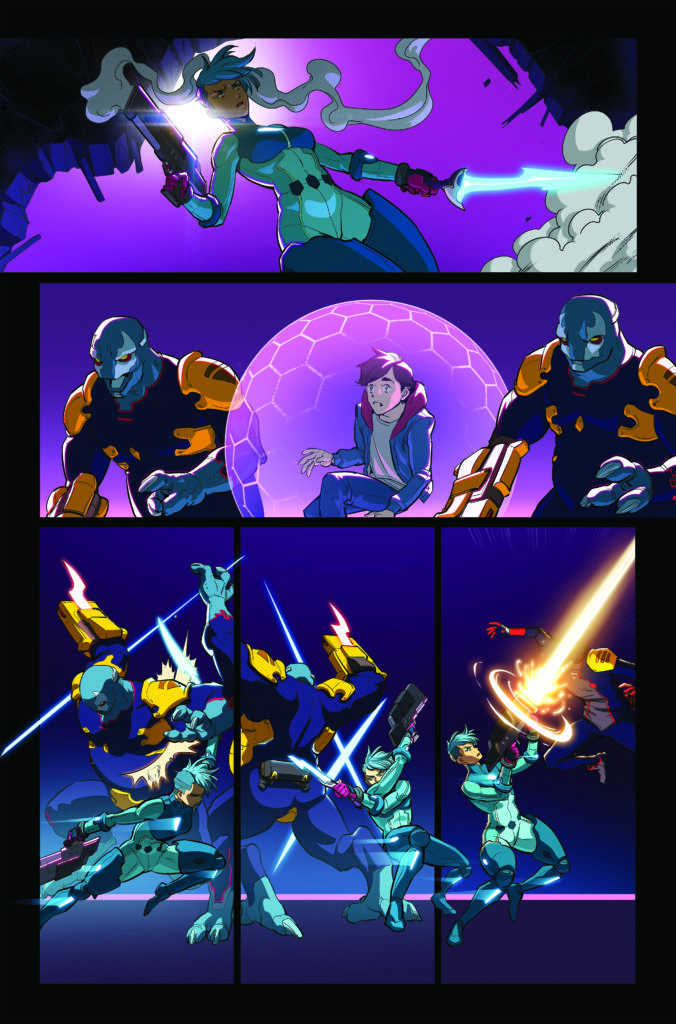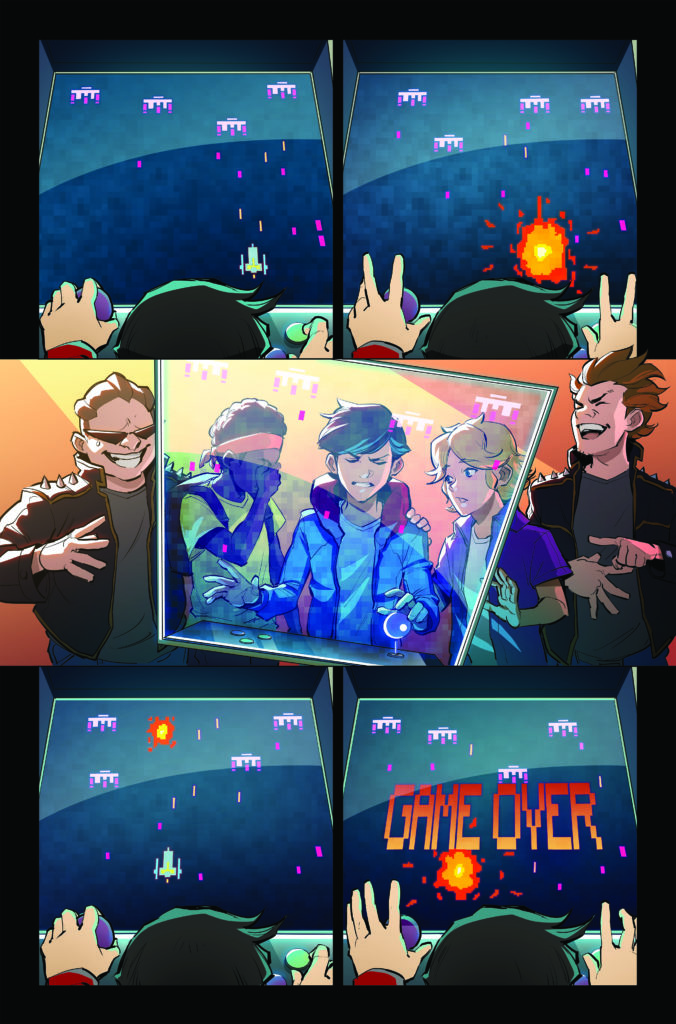Hexagon #2 is the issue where the series’ main plot truly begins. Whereas the previous issue is about character introductions, this issue highlights how their actions come into effect. Despite the series influences, this is about paying the price for wish fulfillment.
How HEXAGON #2 Defies Its Influences
Warning: Spoilers ahead
Hexagon #2 wastes no time in showing its creators’ knowledge of its source material. Opening with references of Back To The Future, a new character’s arrival reminds the reader that this is a different kind of story. The series’ plot is an inversion of The Last Starfighter, a movie deconstructing wish fulfillment. That movie however has a hopeful overtone of finding a better life through recognizing effort. Here, the choices that people make are a turn for the worse.
Protagonist Don’s success at the video game Crucible might seem good for the moment, but people have a right to be skeptical. Just one win doesn’t mean that he’s an ace. Don can’t even turn down the challenges that come his way – his choice is taken from him. That of course foreshadows Crucible’s true purpose, finding a “chosen one” to end an intergalactic war. Which is how the evil empire (the Lakenzi) finds Don.
Hexagon #2’s main strength is its self awareness, and not just for its 80s movie references, but its character interactions as well (something writer Michael Moreci has experience in previous work like Wasted Space). The so-far-unnamed new character is tough as nails, but not stupid enough to just take Don off the streets. She can tell just from the settings that this would be kidnapping. It’s also nice that Don’s relationship with his dad is stable and is willing to face the consequences. It’s what makes the issue’s climax so tragic when the Lakenzi show up. Unlike the deaths of Luke Skywalker’s aunt and uncle that starts Star Wars‘ hero’s journey, Mr. Van Vliet’s abduction isn’t liberation for Don; it’s his draft notice.

HEXAGON #2 Artwork
Jheremy Raapack continues to display great artwork with his character expressions and dynamic outlining accompanying cinematic widescreens. This allows a faithful tribute to many of Hexagon #2’s influences. As far as new character designs go, the Lakenzi and the new character feature video game aesthetics, such as simple helmet designs. The new character’s floating computer even resemble Ghosts, the drones from the video game Destiny. Along with their weapons’ simple designs, this shows how alien they are to Earth. What might look impressive from a reader’s point of view is terrifying to the characters.
The colorists David Kim and Nuo Xu (with help from Bryan Valenza and Marc Monroy) show a higher amount of color variation in Hexagon #2. The more mundane but important situations are practically gone, showing a shift in the series’ tone. The lights no longer even serve as a guide; they are now a warning of danger. The red illuminations are a clear sign of offense towards Don while yellow is a sign of warning.
To top it off, when the game Crucible is played, it now looks pixelated unlike in the previous issue. It doesn’t feel immersive anymore; it’s now just an arcade game with little importance. If that’s not Hexagon #2 transitioning from the opening to the main plot, I don’t know what is.
 Finally, A Larger World Studios delivers lettering worthy of viewing this comic on a screen. With each word balloon fully contained within its panel, whether the reader views the comic on infinite scrolling or Comixology’s Guided View, they can read the comic without ever missing a beat.
Finally, A Larger World Studios delivers lettering worthy of viewing this comic on a screen. With each word balloon fully contained within its panel, whether the reader views the comic on infinite scrolling or Comixology’s Guided View, they can read the comic without ever missing a beat.
Get Ready For HEXAGON
Hexagon #2 is the end of act 1 by setting up the plot. As the creative crew readies for the next level, the reader will have everything they need to see this act through. Even if people don’t understand the references, they can at the least see how entertaining playing them out is. Because as fun as the last issue was, it’s time for the real show to begin.

